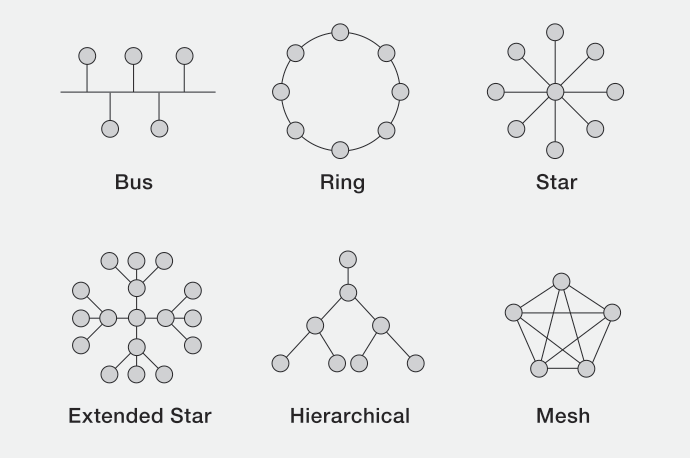Although networks achieved new salience after the invention of the digital computer, networking for the sake of communication is very old. One way to grasp the flow of information through networks is through a representation of their physical and logical topology. The rigidly hierarchical network of the British administration might be presented as a “Star,” where Whitehall is situated at the hub in a raised (hierarchically privileged) center, and each administrative unit is a node on the periphery. The more egalitarian networks that emerge in the American colonies in 1772-1774 are best represented as a “Mesh,” where all can communicate on equal terms with all. (The "mesh" has a certain uncanny resemblance to how the 13 stars, each representing a state, were arrayed on the Betsy Ross Flag.) This was the topology implicit in the Virginia Committee of Correspondence's proposal that the assemblies of the 13 colonies begin regular communication on questions of concern (like the Gaspe Affair.) However, to organize the Continental Congress, the Whigs of British America have recourse to the “Extended Star,” where local town and county committees functioned as the nodes at the periphery, the next level inward represent the assemblies and conventions that select delegates, and the node at the center is the presumptive hub, the Congress itself. The presumptive equality of the colonies keeps this network flat. | |
 |

![Protocols of Liberty: Communication, Innovation, and teh American Revolution [Book Banner from Title Page Image]](Images/William_Warner/Protocols_of_Liberty_Illustrations/Protocols of Liberty - Title Banner.png)


![Protocols of Liberty: Communication, Innovation, and teh American Revolution [Book Banner from Title Page Image]](Images/William_Warner/Protocols_of_Liberty_Illustrations/Protocols of Liberty - Title Banner.png)
